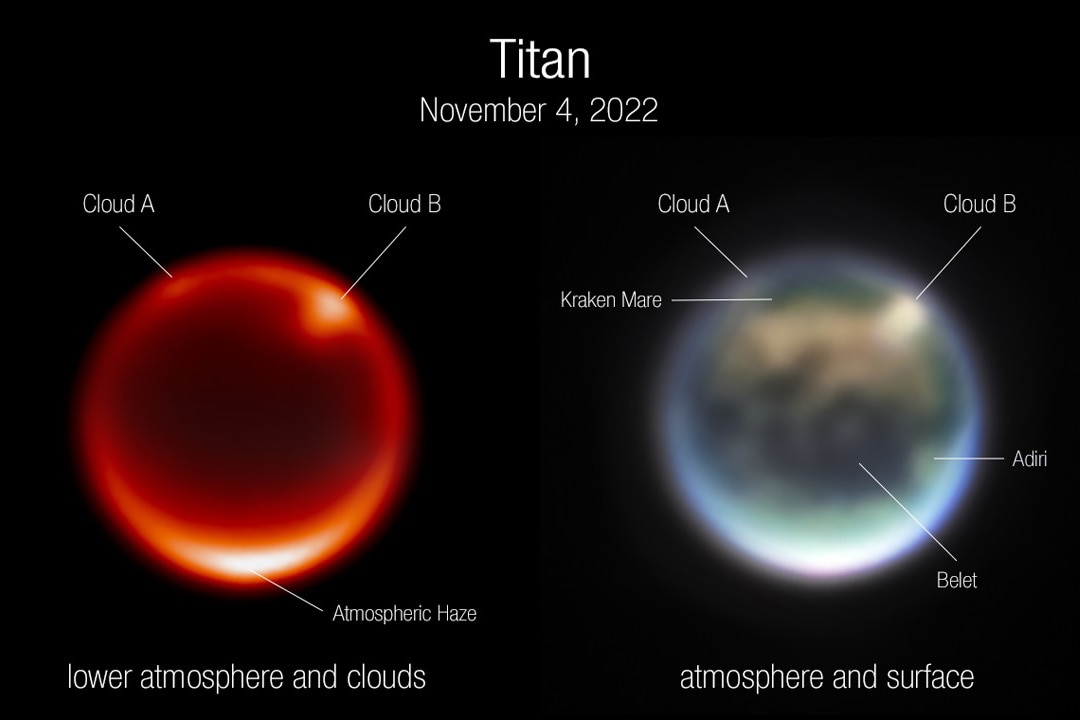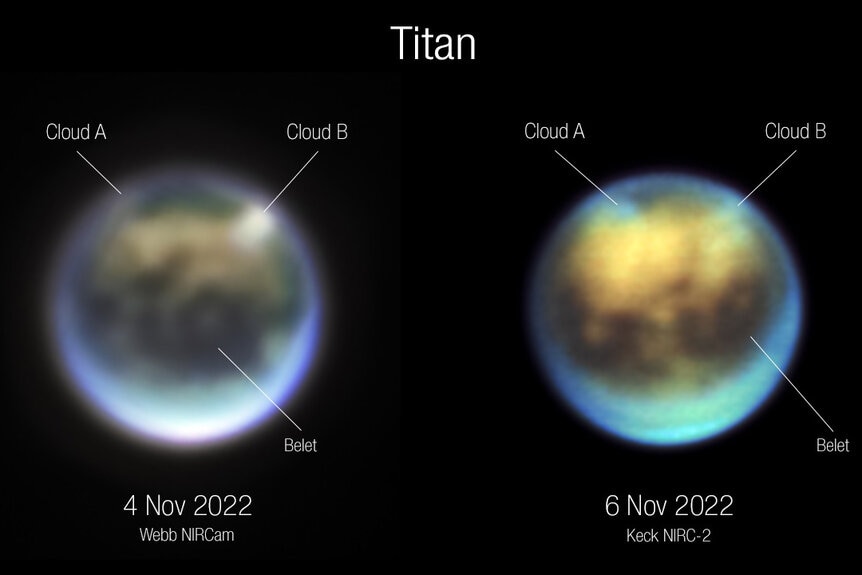Create a free profile to get unlimited access to exclusive videos, sweepstakes, and more!
JWST goes cloud gazing on Saturn's moon Titan
The one on the right looks like a bunny.

After all plant life on Earth goes extinct, humanity crafts a fleet of space-based greenhouses to save the last of the plants and, hopefully, our planet’s ecosystem. One of those ships orbits just beyond Saturn, in the glow of its incredible ring system, just another object amidst Saturn’s 82 confirmed moons. When the call comes in to destroy the domes, and humanity’s last hope of restoring our planetary ecosystem, space botanist Freeman Lowell refuses, and sets out to save the last trees in the solar system. That’s the plot of the 1972 science fiction film Silent Running.
Saturn seems almost intentionally designed for science fiction stories. It’s the perfect mix of bizarrely alien and wholly familiar, and Silent Running is a thrilling reminder that while the solar system is beautiful, there’s no place like home. Certainly, there’s no place else like Earth in the solar system. There may be no place like it anywhere. When it comes to our local neighborhood, most places are barren or actively hostile. Often both. There aren’t even any places that look superficially like Earth, unless you count Saturn’s moon Titan.
From orbit, Titan is totally nondescript, covered over in an impenetrable orange fog, which causes it to more closely resemble its gaseous parent planet than the rocky world it actually is. In 2004, we got a glimpse beneath those clouds with the ESA’s Huygens probe detached from the Cassini orbiter, which descended through the noxious veil to land on Titan’s surface.
It allowed us to see a small part of the moon in striking detail, but much about the wider activity of Titan remains a mystery. Enter the James Webb Space Telescope. In the months since the JWST went into full-fledged operations, it has delivered images of some of the most distant objects in the observable universe, but it has also taken some time to check out the goings on in our own backyard. We could spend hours looking at the JWST’s images of Jupiter. Now, the world’s favorite telescope has turned its attention toward Titan, using its Near Infrared Camera — NIRCam — to peer through the dense methane and nitrogen-rich atmosphere to the world underneath. That’s according to a recent announcement from NASA. It’s worth noting that these images are currently being studied and the findings have not yet gone through peer review.
That said, Titan is of particular interest to astronomers for a couple of reasons. First, unlike other rocky worlds in our solar system — with the obvious exception of Earth — Titan is the only one with an active liquid cycle. The distant moon world has rivers, lakes, and seas. It even rains. The major difference between Earth and Titan in this regard is that Titan’s seas are made of methane and ethane, not water. Second, there’s some hope, tiny as it may be, that organic chemistry might have emerged on Titan, and that we might one day find a truly alien form of life living on that frigid world. According to the New York Times, some scientists wonder if the chemical conditions present on Titan might mirror those of the early Earth. All of which has scientists itching for a better understanding of what’s going on beneath the hazy atmosphere.
When the images came in on the morning of Nov. 5, scientists quickly identified the presence of two large clouds in the upper half of the picture, one other either side of the moon. Those alien clouds confirmed a previous hypothesis that clouds should form in the mid-northern hemisphere during Titan’s late summer. Immediately, researchers began to wonder how those clouds might evolve over time, but a still image can only tell you so much. They needed another look, that’s where the Keck Observatory came in.
Researchers reached out to colleagues at Keck, a pair of massive optical and infrared telescopes on Mauna Kea, in Hawaii. After some negotiations with astronomers previously scheduled to use the observatory, a second set of images was captured and confirmed the presence of clouds in roughly the same position but with a slightly modified shape. It’s unclear if they are the exact same clouds or new ones — two days having passed between observations — but it confirms the seasonal weather patterns scientists predicted.
Typically, talking about the weather is the lowest form of small talk, but all of that changes when the weather in question is happening on another world. These images mark an exciting moment in the study of weather on other worlds, serve as another feather in the JWST’s cap, and provide useful information for NASA’s planned Dragonfly mission, which will send a probe to fly around on Titan looking for life.
You can keep an eye on what the JWST is imaging here.



























